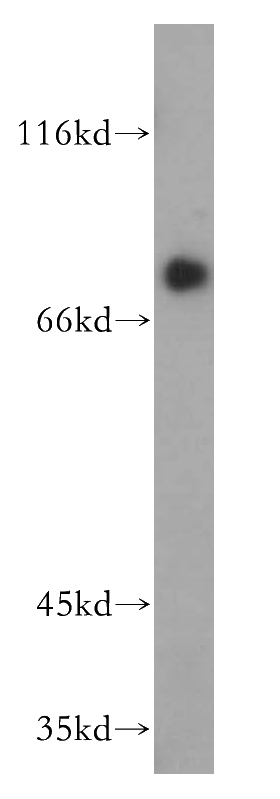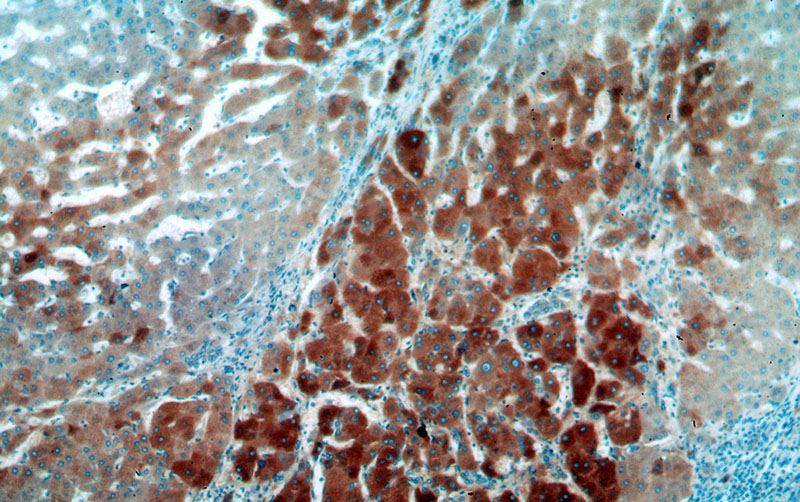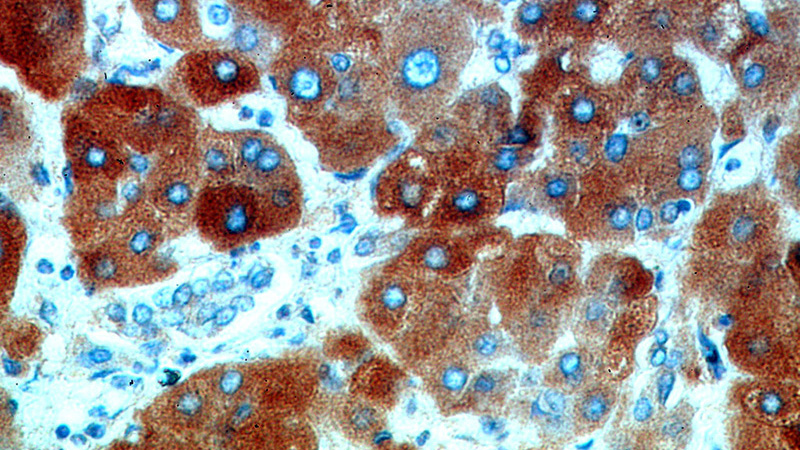-
Product Name
Transferrin antibody
- Documents
-
Description
Transferrin Rabbit Polyclonal antibody. Positive WB detected in mouse kidney tissue, rat kidney tissue. Positive IHC detected in human hepat℃irrhosis tissue, human placenta tissue, human testis tissue. Observed molecular weight by Western-blot: 70 kDa
-
Tested applications
ELISA, WB, IHC
-
Species reactivity
Human, Mouse, Rat; other species not tested.
-
Alternative names
Beta 1 metal binding globulin antibody; DKFZp781D0156 antibody; PRO1557 antibody; PRO2086 antibody; Serotransferrin antibody; Siderophilin antibody; Transferrin antibody
-
Isotype
Rabbit IgG
-
Preparation
This antibody was obtained by immunization of Transferrin recombinant protein (Accession Number: XM_017007089). Purification method: Antigen affinity purified.
-
Clonality
Polyclonal
-
Formulation
PBS with 0.02% sodium azide and 50% glycerol pH 7.3.
-
Storage instructions
Store at -20℃. DO NOT ALIQUOT
-
Applications
Recommended Dilution:
WB: 1:200-1:1000
IHC: 1:20-1:200
-
Validations

mouse kidney tissue were subjected to SDS PAGE followed by western blot with Catalog No:117341(TF antibody) at dilution of 1:400

Immunohistochemical of paraffin-embedded human hepatocirrhosis using Catalog No:117341(TF antibody) at dilution of 1:50 (under 10x lens)

Immunohistochemical of paraffin-embedded human hepatocirrhosis using Catalog No:117341(TF antibody) at dilution of 1:50 (under 40x lens)
-
Background
Serotransferrin(TF) is a 77 kDa secreted protein which is also named as transferrin, siderophilin, beta-1 metal-binding globulin and belongs to a family of homologous iron-binding glycoproteins that encompasses lactoferrin (found both intracellular and in secretions, including milk), melanotrasferrin (present on melanoma cells) and ovotransferrin (present in egg white). TF is a multi-function protein with a primary role in transporting iron in a safe, redox-inactive state from absorption to utilization or storage sites around the body. The association of Tf with the immune system derives from its ability to restrict serum free-iron levels, creating low-iron environments where the infection capacity of pathogenic microorganisms is limited. TF is expressed predominantly in the liver and secreted in plasma, but lower amounts can be synthesized in other tissues such as the brain and the testis
-
References
- Herrera C, Pettiglio MA, Bartnikas TB. Investigating the role of transferrin in the distribution of iron, manganese, copper, and zinc. Journal of biological inorganic chemistry : JBIC : a publication of the Society of Biological Inorganic Chemistry. 19(6):869-77. 2014.
- Patil H, Saha A, Senda E. Selective impairment of a subset of Ran-GTP-binding domains of ran-binding protein 2 (Ranbp2) suffices to recapitulate the degeneration of the retinal pigment epithelium (RPE) triggered by Ranbp2 ablation. The Journal of biological chemistry. 289(43):29767-89. 2014.
- Xue TC, Jia QA, Bu Y. CXCR7 correlates with the differentiation of hepatocellular carcinoma and suppresses HNF4α expression through the ERK pathway. Oncology reports. 32(6):2387-96. 2014.
- Takano M, Ohkusa M, Otani M. Lipid A-activated inducible nitric oxide synthase expression via nuclear factor-κB in mouse choroid plexus cells. Immunology letters. 167(2):57-62. 2015.
Related Products / Services
Please note: All products are "FOR RESEARCH USE ONLY AND ARE NOT INTENDED FOR DIAGNOSTIC OR THERAPEUTIC USE"
